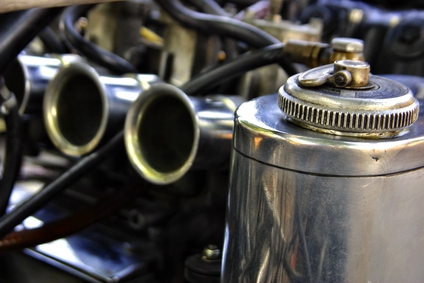
All vehicles with internal combustion engines have carburetors that blend air and fuel. When the engine is turned off, the vapors are vented and stored. The electromechanical device that controls this function is called the bowl vent solenoid.
Solenoids are tight coils of electromagnetically charged wire wound in a helix shape around a movable slug of iron or steel. As the piece of metal--also known as the armature--moves back and forth, it becomes an electromagnet. The electromagnetic force field that is created can be used to move small metal parts such as valves.
Internal combustion engines use a carburetor to blend air and fuel for ignition. When the engine is not running, gasoline vapors escape the carburetor through the bowl vent through a hose to the float bowl and then to a canister that contains charcoal. There the vapors are trapped to be released into the intake manifold upon ignition of the motor.
When the engine is turned off, the armature of the bowl vent solenoid is activated. The electromagnetic field draws the bowl vent valve open, allowing the flow of the vapors to the float bowl. When the engine is ignited, the armature moves again and the electromagnetic current pulls the valve closed. At that time, the purge solenoid is activated and the purge valve opens, pulling the vapors from the canister into the intake manifold of the vehicle where they are burned by the engine.